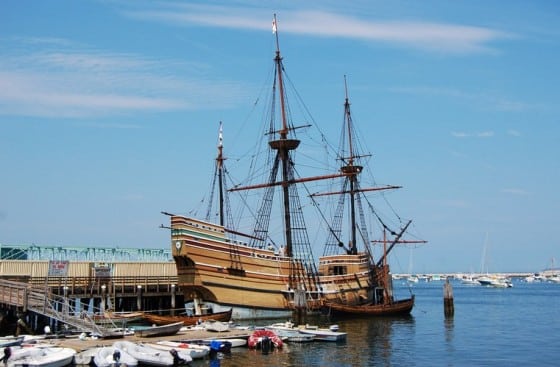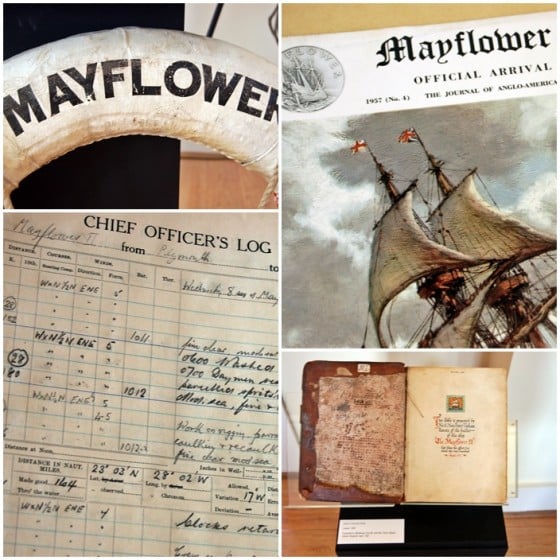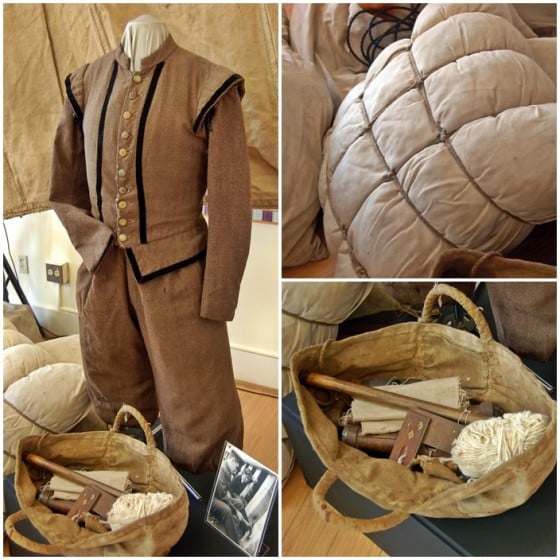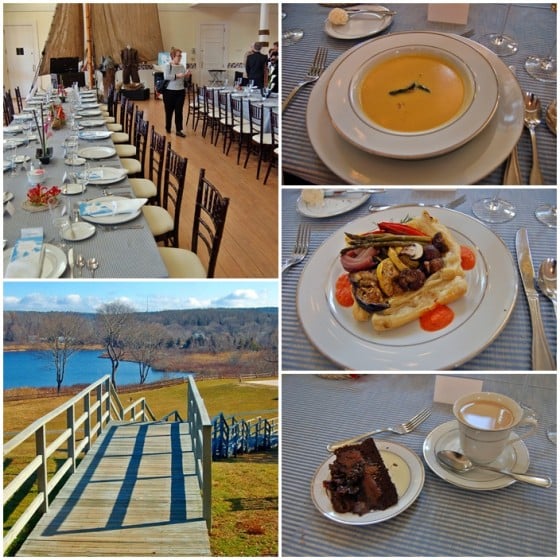Celebrating Mayflower II at Plimoth Plantation
Each year the seaside town of Plymouth, MA is visited by countless tourists – local, national, and global – hoping to experience a taste of 1620’s American history by wandering through the kitchen garden of a 1627 Plimoth Colony housewife, peeking inside a mat-covered wetu home at a Wampanoag campsite, or stepping aboard the Mayflower […]

 Sadly, the original Mayflower disappeared from records within a few years of its famous 1620 arrival. Long-discussed plans for a full-scale reproduction finally came to fruition thanks to Englishman Warwick Charlton and Plimoth Plantation in early 1950’s, a time when the relationship between the United States and Great Britain was very warm indeed thanks to their cooperation during World War II. The ship would be built in England and then sailed to America, where Plimoth Plantation, which had been established a decade earlier, agreed to maintain and exhibit her stateside.
Mayflower II was built with a keen attention to authenticity and detail, “from the solid oak timbers and tarred hemp rigging, to the wood and horn lanterns, and hand-colored maps.” A few modern updates were put in place to make the vessel more visitor-safe for the future, such as the construction of a staircase where a ladder would have been in 1620.
On April 20, 1957, with the world watching, Mayflower II began its 55-day journey across the Atlantic. On board were 34 men, ranging in experience from skilled, like the ship’s Captain Alan Villiers, to green, like teenage cabin boy Joseph Meany. Also on board was Felix, the ship’s official kitten, who had his own life jacket and enjoyed enormous (and well-deserved) popularity.
While Mayflower II is still robustly sea-worthy and has been known to visits ports other than Plymouth, she mostly enjoys her permanent home and the stream of visitors that traipse across her decks each year. Decks which are lovingly cared for by Plimoth Plantation.
To celebrate Mayflower II and the museum’s ongoing effort to maintain the ship to the highest standard, I was delighted to attend a luncheon at the museum’s Hornblower Visitors Center earlier this month.
On display were objects from the ship’s 1957 voyage, including the chief officer’s log with its careful notations, as well as the 17th century Book of Common Prayer that was donated to the ship for use in Sunday Services.
Sadly, the original Mayflower disappeared from records within a few years of its famous 1620 arrival. Long-discussed plans for a full-scale reproduction finally came to fruition thanks to Englishman Warwick Charlton and Plimoth Plantation in early 1950’s, a time when the relationship between the United States and Great Britain was very warm indeed thanks to their cooperation during World War II. The ship would be built in England and then sailed to America, where Plimoth Plantation, which had been established a decade earlier, agreed to maintain and exhibit her stateside.
Mayflower II was built with a keen attention to authenticity and detail, “from the solid oak timbers and tarred hemp rigging, to the wood and horn lanterns, and hand-colored maps.” A few modern updates were put in place to make the vessel more visitor-safe for the future, such as the construction of a staircase where a ladder would have been in 1620.
On April 20, 1957, with the world watching, Mayflower II began its 55-day journey across the Atlantic. On board were 34 men, ranging in experience from skilled, like the ship’s Captain Alan Villiers, to green, like teenage cabin boy Joseph Meany. Also on board was Felix, the ship’s official kitten, who had his own life jacket and enjoyed enormous (and well-deserved) popularity.
While Mayflower II is still robustly sea-worthy and has been known to visits ports other than Plymouth, she mostly enjoys her permanent home and the stream of visitors that traipse across her decks each year. Decks which are lovingly cared for by Plimoth Plantation.
To celebrate Mayflower II and the museum’s ongoing effort to maintain the ship to the highest standard, I was delighted to attend a luncheon at the museum’s Hornblower Visitors Center earlier this month.
On display were objects from the ship’s 1957 voyage, including the chief officer’s log with its careful notations, as well as the 17th century Book of Common Prayer that was donated to the ship for use in Sunday Services.
 Each sailor from the 1957 voyage had a special set of period clothes to wear on Sundays, some of which have since been donated to Plimoth Plantation. On the day of the luncheon, museum staff announced two new objects to the ship’s collection of treasures – the clothing worn by cabin boy Joe Meany (who was also in attendance – how marvelous to meet him), as well as a “message in a bottle” signed by all members of the crew and tossed overboard during the journey. A family enjoying a tropical vacation found the bottle, and decades later, donated it to Plimoth Plantation.
Each sailor from the 1957 voyage had a special set of period clothes to wear on Sundays, some of which have since been donated to Plimoth Plantation. On the day of the luncheon, museum staff announced two new objects to the ship’s collection of treasures – the clothing worn by cabin boy Joe Meany (who was also in attendance – how marvelous to meet him), as well as a “message in a bottle” signed by all members of the crew and tossed overboard during the journey. A family enjoying a tropical vacation found the bottle, and decades later, donated it to Plimoth Plantation.
 After spending an hour viewing the objects on display, meeting fellow attendees, and chatting with members of the Plimoth Plantation staff (including lovely intern and history enthusiast Judith!), we sat down to lunch.
I was thrilled to have the chance to sit across from the museum’s official Colonial Foodways Culinarian, Kathleen Walls. Kathleen, who has worn many hats (some of them pilgrim hats) during her many years working for the museum, was as friendly as she was knowledgeable about colonial dishes. If you know how much I love learning about food history, and New England food history in particular, it won’t come as a surprise that I steered the conversation towards Indian Pudding, where it lingered for a good 15 minutes!
In addition to the conversation and company, the lunch itself was delicious. It started with a creamy squash soup, followed by roasted vegetables in puff pastry (the vegetarian entree), with rich slice of chocolate cherry cake for dessert.
After spending an hour viewing the objects on display, meeting fellow attendees, and chatting with members of the Plimoth Plantation staff (including lovely intern and history enthusiast Judith!), we sat down to lunch.
I was thrilled to have the chance to sit across from the museum’s official Colonial Foodways Culinarian, Kathleen Walls. Kathleen, who has worn many hats (some of them pilgrim hats) during her many years working for the museum, was as friendly as she was knowledgeable about colonial dishes. If you know how much I love learning about food history, and New England food history in particular, it won’t come as a surprise that I steered the conversation towards Indian Pudding, where it lingered for a good 15 minutes!
In addition to the conversation and company, the lunch itself was delicious. It started with a creamy squash soup, followed by roasted vegetables in puff pastry (the vegetarian entree), with rich slice of chocolate cherry cake for dessert.
 The view outside the Hornblower Visitor Center was also a lovely sight. Sometimes a winter day can really sparkle with color – even when it’s missing the clean glow of snow.
While only handful of Americans can claim to be descendents from someone on the original Mayflower passenger list, Plimoth Plantation is truly a museum we can all feel equally a part of. After all, the story of the start of America is the story of all Americans – whether you can trace your ancestry back one or ten generations. The passion and energy for preserving the American story, so aptly commemorated with the construction and sailing of the Mayflower II, is on display at its finest at Plimoth Plantation. If you have never been to the museum, or haven’t been there in awhile (as I haven’t), you should put it on your list for 2012.
The museum celebrates opening day for the 2012 season on Saturday, March 17th with their annual Rare Breeds Animal Parade, which I believe may also include baby animals. Throw in some more “How to Talk Pilgrim” and I don’t see how I could resist…
Have you been to Plimoth Plantation and the Mayflower II? Share your experience in the comments section!
The view outside the Hornblower Visitor Center was also a lovely sight. Sometimes a winter day can really sparkle with color – even when it’s missing the clean glow of snow.
While only handful of Americans can claim to be descendents from someone on the original Mayflower passenger list, Plimoth Plantation is truly a museum we can all feel equally a part of. After all, the story of the start of America is the story of all Americans – whether you can trace your ancestry back one or ten generations. The passion and energy for preserving the American story, so aptly commemorated with the construction and sailing of the Mayflower II, is on display at its finest at Plimoth Plantation. If you have never been to the museum, or haven’t been there in awhile (as I haven’t), you should put it on your list for 2012.
The museum celebrates opening day for the 2012 season on Saturday, March 17th with their annual Rare Breeds Animal Parade, which I believe may also include baby animals. Throw in some more “How to Talk Pilgrim” and I don’t see how I could resist…
Have you been to Plimoth Plantation and the Mayflower II? Share your experience in the comments section!Aimee Tucker
Aimee Tucker is Yankee Magazine’s Home Editor and the Senior Digital Editor of NewEngland.com. A lifelong New Englander and Yankee contributor since 2010, Aimee has written columns devoted to history, foliage, retro food, and architecture, and regularly shares her experiences in New England travel, home, and gardening. Her most memorable Yankee experiences to date include meeting Stephen King, singing along to a James Taylor Fourth of July concert at Tanglewood, and taking to the skies in the Hood blimp for an open-air tour of the Massachusetts coastline.
More by Aimee Tucker

